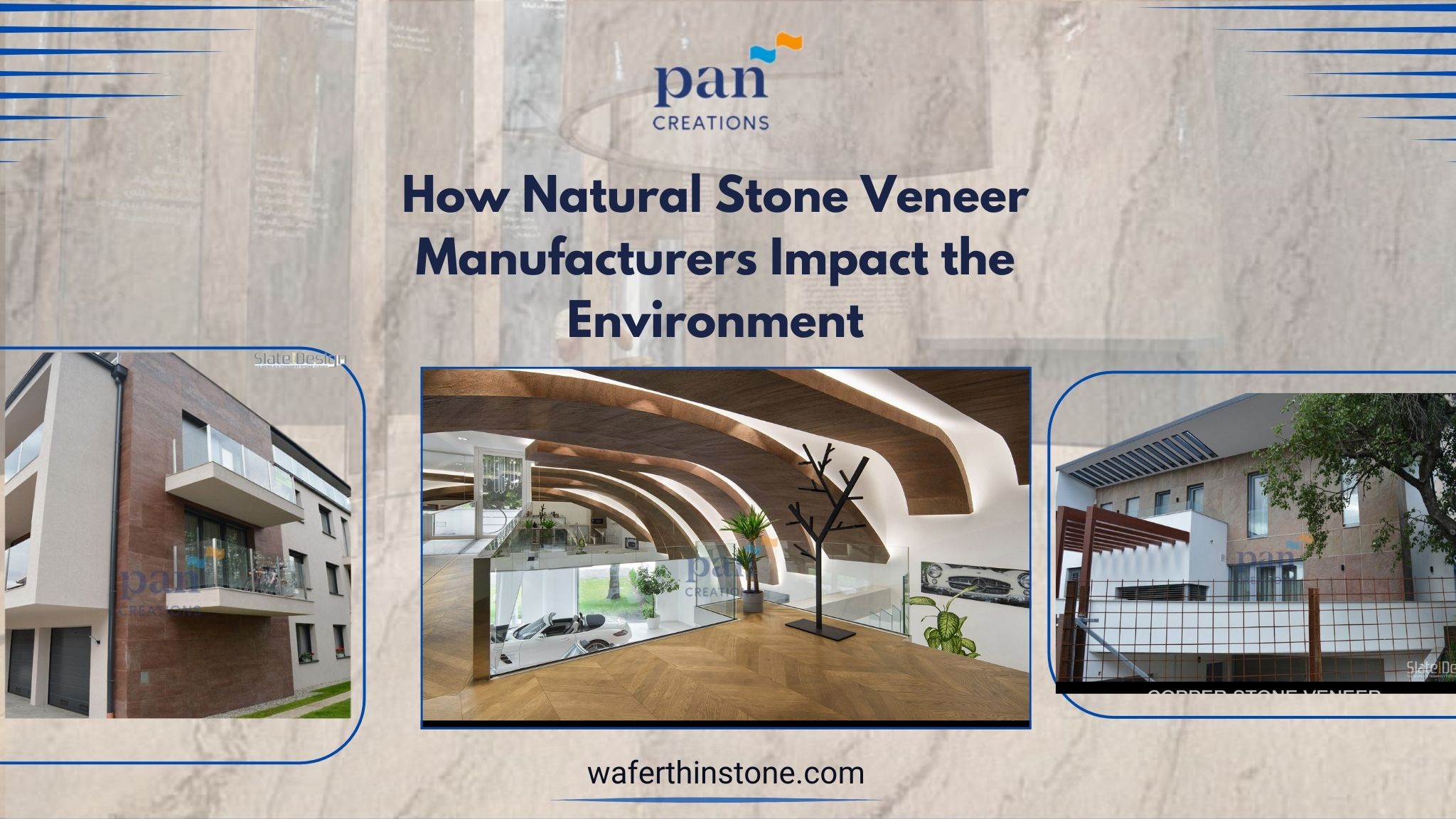In today’s environmentally conscious world, the impact of natural stone veneer manufacturers extends far beyond the aesthetic enhancements they offer to buildings and interiors. The production and utilization of stone veneers, including thin marble veneer panels, natural stone veneer sheets, and natural limestone veneer, represent a critical intersection of natural beauty and ecological considerations. As sustainability becomes an increasingly crucial factor in construction and design, understanding how these products affect our planet is of paramount importance. This insight not only informs your choices as a consumer or designer but also highlights the significance of sustainable practices among stone veneer manufacturers, especially those pioneering innovations in India and globally.
Throughout this article, you’ll gain an in-depth look into the quarrying and production processes that transform raw, natural stones into the veneers used in homes and commercial spaces around the world. We’ll explore how natural stone veneer manufacturers contribute to energy efficiency and building insulation, along with the economic and quality considerations that influence their market. By delving into these topics, you’ll better understand the balance between leveraging the timeless beauty of natural stone and minimizing environmental impact, ensuring your project decisions are both aesthetically pleasing and environmentally responsible.
The Quarrying Process for Natural Stone
Invasive Methods
The quarrying of natural stone involves techniques that can significantly alter the landscape. One common method is blasting, which is used to detach large blocks from the bedrock. This process, while effective for gathering dimension stone, often leads to the disfiguration of the natural environment and can cause substantial habitat loss. Additionally, the machinery used in these operations can leave large pits and mounds of waste material, which have a direct and lasting impact on the surrounding area.
Ecological Impact
The ecological repercussions of quarrying are profound. Mining and quarrying activities contribute to air and water contamination with pollutants such as sulfur dioxide, which can lead to acid rain affecting both wildlife and local communities. The U.S. Environmental Protection Agency highlights the release of numerous air pollutants from quarrying activities, which include particulate matter and sulfur compounds contributing to environmental degradation. Furthermore, the disruption of local hydrology due to quarrying can lead to altered water flow and quality, impacting aquatic life and water availability for human use.
Long-Term Damage
The environmental damage caused by quarrying is not only immediate but can also have long-lasting effects. Even after the cessation of quarrying activities, the landscape may take many years to recover. Companies are beginning to invest in land restoration, which involves leveling spoil heaps and filling in quarries, but vegetation re-establishment is a slow process and often incomplete. Additionally, abandoned mining sites continue to pose environmental threats, with ongoing issues such as water pollution from leached heavy metals and sulfur. Efforts to recycle materials and conserve mineral resources are becoming increasingly important to mitigate these long-term impacts.
Production Process for Manufactured Stone
Eco-Friendly Materials
Manufactured stone veneer is crafted from a blend of concrete and recycled products, creating a product that is significantly lighter than natural stone. This not only makes installation easier but also lessens the environmental burden. For instance, Cultured Stone, a pioneer in the industry, has been recognized for using a minimum average of 60% pre-consumer recycled content in their products. This commitment to sustainability is crucial in reducing waste and promoting eco-friendly construction practices.
Controlled Production Environment
The production process of manufactured stone veneer is meticulously controlled to ensure quality and minimize environmental impact. Unlike natural stone that requires extensive quarrying, manufactured stone is produced in a factory setting where every aspect, from the mix to the curing process, is carefully managed. This controlled environment allows for the implementation of advanced technologies that reduce emissions. For example, by regrinding and reusing materials that do not meet quality standards, manufacturers like Cultured Stone ensure that virtually no resources are wasted.
Carbon Footprint Reduction
One of the significant advantages of manufactured stone veneer is its contribution to reducing the carbon footprint of building materials. The production process involves creating lightweight concrete, which emits fewer carbon emissions compared to traditional concrete production. Additionally, the reduction in cement used in the material mix further decreases the overall greenhouse gas emissions. Cultured Stone’s closed-loop recycling system, which reuses water in production, exemplifies the industry’s move towards more sustainable manufacturing practices, especially in regions like California where water conservation is critical.
Energy Efficiency and Insulation Benefits
Thermal Mass Properties
Thermal mass is a key feature in the construction materials used by natural stone veneer manufacturers, including those producing natural limestone veneer and natural stone veneer sheets. This property allows materials like stone and concrete to absorb, store, and later release heat, effectively regulating indoor temperatures. In climates with significant day-night temperature differences, materials with high thermal mass can significantly enhance comfort while reducing reliance on mechanical heating and cooling systems. For instance, during winter, a high thermal mass can absorb heat from sunlight during the day and release it at night, keeping indoor environments warmer without additional energy input. Conversely, in summer, blocking sunlight from these materials can help keep interiors cool, utilizing stored coolness from the night to moderate day temperatures.
Reduction in Heating and Cooling Needs
Integrating materials with high thermal mass into your home’s design can lead to substantial energy savings. In mixed climates, where both heating in winter and cooling in summer are necessary, leveraging the properties of thermal mass can minimize the need for external heating and cooling sources, thus lowering energy bills. This is particularly effective in designs where thermal mass materials are exposed to passive solar heat or shielded by appropriate shading and insulation during different seasons. Additionally, the strategic placement of thermal mass—such as in north-facing rooms or near the center of the building—can optimize its benefits, enhancing both passive heating and cooling efficiencies.
By understanding and utilizing these principles, you can ensure that your use of products like thin marble veneer panels not only contributes to the aesthetic value of your space but also to its environmental sustainability and energy efficiency.
Economic and Quality Considerations
Cost of Implementation
When considering natural stone veneer manufacturers, one of the initial factors you need to consider is the cost of implementation. Natural stone veneer, including products like natural limestone veneer and thin marble veneer panels, can be more expensive upfront compared to other materials. However, the investment might be justified by the long-term benefits and aesthetic appeal they offer. It’s important to compare these costs against other siding options to ensure you’re making a financially sound decision.
Durability and Longevity
Natural stone veneers, such as those made from natural limestone and marble, are renowned for their durability and longevity. These materials withstand harsh weather conditions and wear over time, which can significantly reduce the need for replacements and repairs. This inherent durability not only enhances the quality of the building but also offers a sustainable option by minimizing waste and reducing the frequency of material turnover.
Maintenance Requirements
Maintenance is a crucial aspect of ensuring the longevity of any building material. Natural stone veneer sheets and panels require minimal maintenance compared to other facade materials. Regular inspections and gentle cleaning are usually sufficient to maintain their condition and appearance. This low maintenance requirement can lead to cost savings over time, making natural stone veneer an economically viable option despite the higher initial investment.
By understanding these economic and quality considerations, you can make more informed decisions about incorporating natural stone veneers into your projects, balancing cost with sustainability and aesthetic value.
Conclusion
Through the exploration of natural stone veneer manufacturers, natural limestone veneer, thin marble veneer panels, and natural stone veneer sheets, we’ve uncovered the significant impacts these materials and processes have on the environment alongside their economic and quality benefits. This comprehensive analysis not only informs us of the balance needed between aesthetic allure and environmental stewardship but also encourages a conscientious approach to product choice and application within construction and design projects. The careful consideration of manufacturing techniques, the ecological footprint, and the immense potential of thermal mass properties underscores the importance of integrating sustainable practices across every phase of production and implementation.
As the demand for construction materials that blend beauty, durability, and ecological sensitivity continues to grow, the role of natural stone veneers becomes increasingly pivotal. The insights gleaned from this article emphasize the need for ongoing innovation and adherence to sustainable practices among manufacturers, highlighting not just the immediate implications for energy efficiency and building aesthetics, but also the long-term importance of such choices for our planet. By favoring materials like natural limestone veneer and adopting eco-friendly manufacturing processes, we collectively contribute to a more sustainable and aesthetically rich built environment. This journey towards sustainability, propelled by informed decisions and responsible production practices, invites further research and action to enhance both the quality of our constructions and the well-being of our world.
Must Read: Why Flexible Stone Veneer and Thin Limestone Veneer Panels are Popular Choices in India
FAQs
What issues are commonly associated with manufactured stone veneer?
Manufactured stone veneer often leads to problems such as mold, wood rot, and persistent moisture inside the walls where it is installed. These issues can be both costly and challenging to fix.
How environmentally friendly is stone veneer?
Stone veneer is considered eco-friendly because it does not rot or burn like wood, thus not releasing greenhouse gases post-use. It is durable, seldom needs replacement, and its maintenance has a minimal carbon footprint. Additionally, the methods used to quarry stone veneer are designed to have a minimal impact on natural habitats.
Is natural stone a sustainable material?
Natural stone is highly sustainable, enduring through weather and time more effectively than any other building or manmade material. Historical structures like the Egyptian pyramids and the Parthenon demonstrate its longevity and sustainability.
What is a major environmental concern associated with the use of natural stone?
One significant environmental concern with natural stone is that quarrying can cause aesthetic and environmental damage, including erosion. Additionally, the heavy weight of natural stone makes it energy-intensive to transport to various construction sites.

